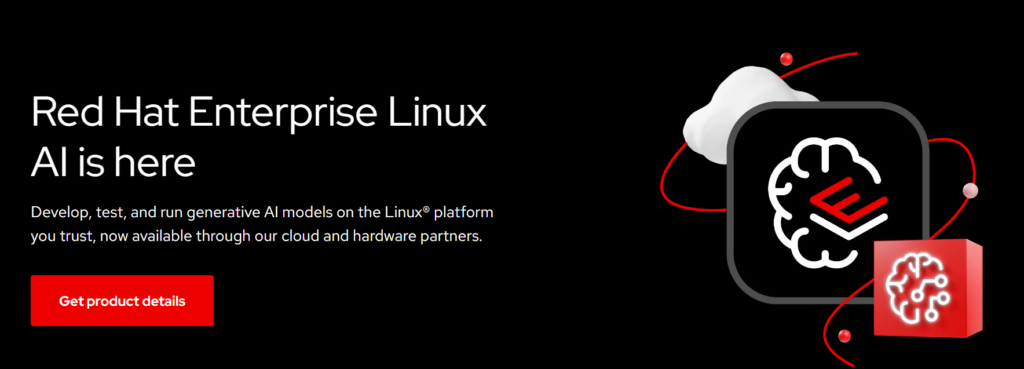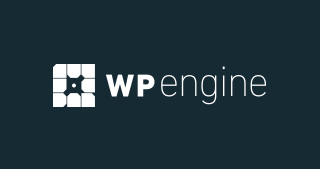Introduction
The Linux Foundation is a non-profit organization established in 2000 to promote, protect, and advance Linux and other open-source technologies. It serves as a hub for open-source collaboration, bringing together developers, companies, and organizations to create and sustain open-source projects.
The Linux Foundation supports a wide range of technologies, including the Linux operating system, Kubernetes, Hyperledger (blockchain), and other key projects across industries such as cloud computing, networking, and artificial intelligence (AI).
The foundation’s mission is to foster innovation by providing resources, training, and collaborative platforms that help individuals and companies contribute to and benefit from open-source software. It also plays a key role in creating standards, organizing industry-wide initiatives, and offering professional certifications to promote open-source skills.

Red Hat is a for-profit company that specializes in providing enterprise-level open-source software solutions. Founded in 1993, Red Hat is best known for its flagship product, Red Hat Enterprise Linux (RHEL), a commercial Linux distribution designed for businesses.
In addition to RHEL, Red Hat offers a suite of products and services focused on cloud computing, automation, and container orchestration, including Red Hat OpenShift (a Kubernetes platform) and Ansible (an IT automation tool).
Red Hat’s business model revolves around selling subscriptions to its software, which include access to updates, security patches, and dedicated 24/7 technical support. While Red Hat builds its products on open-source technologies, it enhances them to meet the needs of enterprises, focusing on reliability, security, and scalability.
Red Hat was acquired by IBM in 2019 but continues to operate independently within IBM.
Overview of Linux Foundation and Red Hat
Linux Foundation Overview
The Linux Foundation is a non-profit organization established in 2000 to support the growth and advancement of Linux, the open-source operating system created by Linus Torvalds. Over the years, the Linux Foundation has evolved into a hub for various open-source projects and technologies, extending beyond Linux to include cloud computing, blockchain, AI, networking, and much more. It serves as an umbrella organization for many important open-source initiatives, including Kubernetes, Hyperledger, ONAP, and Node.js.

The Linux Foundation operates on the principles of open collaboration, fostering community-driven development by bringing together developers, corporations, and other organizations to advance innovation in open-source technologies. The foundation focuses on creating sustainable ecosystems around open-source projects to ensure they are widely adopted and continually developed.
Key Roles and Responsibilities
- Hosting open-source projects: The Linux Foundation hosts and supports numerous open-source projects, ensuring their longevity and growth.
- Standardization: It works to establish open standards and frameworks to encourage innovation and interoperability across different platforms.
- Training and certification: The foundation offers professional training programs and certifications, including Kubernetes, Linux, and blockchain-related technologies.
- Community building: It fosters collaboration by connecting developers, industries, and governments to work on cutting-edge technology.
Red Hat Overview
Red Hat, founded in 1993, is a multinational software company that provides open-source software solutions tailored for businesses. It is most famous for Red Hat Enterprise Linux (RHEL), a commercial Linux distribution designed for enterprises that require reliability, scalability, and enterprise-level support. Red Hat builds its offerings by taking open-source technologies and creating secure, supported, and certified products that businesses can trust.
Red Hat’s business model revolves around offering subscription-based services, including software access, support, and consulting. It provides a comprehensive suite of solutions such as Red Hat OpenShift (a Kubernetes platform), Ansible (an automation tool), and Red Hat OpenStack Platform. In 2019, Red Hat was acquired by IBM for $34 billion, but it continues to operate independently within IBM to focus on open-source software solutions for enterprise clients.

Features of Linux Foundation and Red Hat
Linux Foundation Features
- Open Source Project Hosting
- The Linux Foundation hosts and supports a wide range of open-source projects, including Linux, Kubernetes, Hyperledger, Node.js, and more. It provides infrastructure, resources, and governance to sustain these projects.
- Collaboration and Community Building
- The foundation fosters collaboration between developers, companies, and organizations to promote the growth of open-source software. It brings together contributors from various industries to work on innovative projects.
- Training and Certification Programs
- The Linux Foundation offers globally recognized training and certifications in open-source technologies. Certifications like Certified Kubernetes Administrator (CKA) and Linux Foundation Certified System Administrator (LFCS) are highly valued in the industry.
- Standardization and Governance
- The Linux Foundation works to create open standards and frameworks for technologies like cloud computing, networking, and blockchain, helping to ensure interoperability and innovation across platforms.
- Ecosystem Development
- Through various initiatives, the foundation helps build ecosystems around open-source projects, ensuring their sustainability and adoption across industries. It connects developers, companies, and governments to advance open-source solutions.
- Membership Model
- The Linux Foundation operates on a membership model, offering corporate memberships to companies interested in influencing and contributing to open-source projects. Membership levels range from small organizations to large enterprises.
Red Hat Features
- Enterprise-Grade Linux Solutions
- Red Hat’s flagship product, Red Hat Enterprise Linux (RHEL), is a stable, secure, and scalable Linux distribution tailored for enterprise environments. It is designed to support mission-critical workloads in industries like finance, healthcare, and telecommunications.
- OpenShift Kubernetes Platform
- Red Hat OpenShift is a container orchestration platform built on Kubernetes. It helps organizations manage, deploy, and scale containerized applications in a hybrid cloud environment.
- Automation and IT Management
- Red Hat provides Ansible, a powerful automation tool that simplifies IT management, configuration, and application deployment across diverse environments. It is widely used for automating cloud provisioning, network management, and continuous deployment.
- Enterprise Support and Consulting
- Red Hat offers 24/7 technical support, ensuring businesses can rely on its software for mission-critical applications. In addition to software support, Red Hat provides consulting services to help companies integrate open-source technologies into their infrastructure.
- Hybrid Cloud Solutions
- Red Hat focuses on enabling organizations to run applications across hybrid cloud environments, offering products like Red Hat OpenStack Platform and Red Hat Virtualization. These solutions help manage both on-premise and cloud-based workloads efficiently.
- Security and Compliance
- Red Hat places a strong emphasis on security, with regular updates, patches, and compliance solutions tailored for industries with strict regulatory requirements, such as healthcare and government sectors.
- Subscription-Based Business Model
- Red Hat operates on a subscription model, offering software, updates, and technical support as part of the subscription. This model ensures that businesses receive continuous updates, security patches, and access to the latest features.
- Upstream Contributions
- Red Hat actively contributes to the open-source community, particularly through its involvement in projects like Fedora (an upstream version of RHEL). This contribution ensures Red Hat’s products are deeply integrated with the open-source ecosystem.

Pricing
Pricing of Linux Foundation
Linux Foundation operates on a non-profit basis, offering both free and paid services. It provides open-source tools at no cost but charges for training, certifications, and memberships.
- Training: Prices for certifications like Kubernetes or Hyperledger typically range from $200 to $500.
- Corporate Memberships: Corporate membership fees range from $5,000 to over $500,000 annually, depending on the size and needs of the company.
Pricing of Read Hat
Red Hat operates on a subscription-based pricing model for its enterprise solutions, which includes access to the software, updates, and technical support. Prices vary depending on the level of service required.
- Red Hat Enterprise Linux (RHEL): Pricing starts at $349/year for a basic subscription, increasing to around $2,499/year for premium support.
- Red Hat OpenShift: Prices for OpenShift vary significantly, ranging from free for the developer tier to thousands per year for enterprise deployment.
- Consulting and Support: Additional fees are charged for premium consulting, support, and managed services.
FAQs
What is the difference between the Linux Foundation and Red Hat?
The Linux Foundation is a non-profit organization promoting open-source software and collaboration across industries. Red Hat is a for-profit company that offers enterprise-level open-source solutions and support for businesses.
Does the Linux Foundation provide enterprise-level support?
No, the Linux Foundation is focused on community collaboration and project development. It does not offer enterprise-level support, which is where companies like Red Hat come in.
What are the key products offered by Red Hat?
Red Hat offers various enterprise-grade products, including Red Hat Enterprise Linux (RHEL), Red Hat OpenShift, and Ansible for automation.
How much does Red Hat Enterprise Linux cost?
The cost of Red Hat Enterprise Linux starts at $349/year for self-support and increases to $2,499/year for premium support with 24/7 access.
Are Linux Foundation certifications valuable in the industry?
Yes, certifications from the Linux Foundation in technologies like Kubernetes, Linux, and Hyperledger are highly regarded in the IT industry.
Conclusion
Both the Linux Foundation and Red Hat play essential roles in the open-source ecosystem, but they serve different purposes. The Linux Foundation focuses on fostering open-source innovation, making it a vital platform for developers and organizations interested in collaboration and the future of open-source technologies. On the other hand, Red Hat takes open-source solutions and packages them into enterprise-ready products, offering robust support, security, and scalability for businesses.
For organizations and developers interested in contributing to open-source or advancing their technical skills, the Linux Foundation is the go-to choice. However, companies looking for dependable, secure, and supported enterprise solutions should turn to Red Hat for its premium offerings and industry-leading support.
In the world of open-source, both the Linux Foundation and Red Hat continue to drive innovation, albeit from different perspectives.



